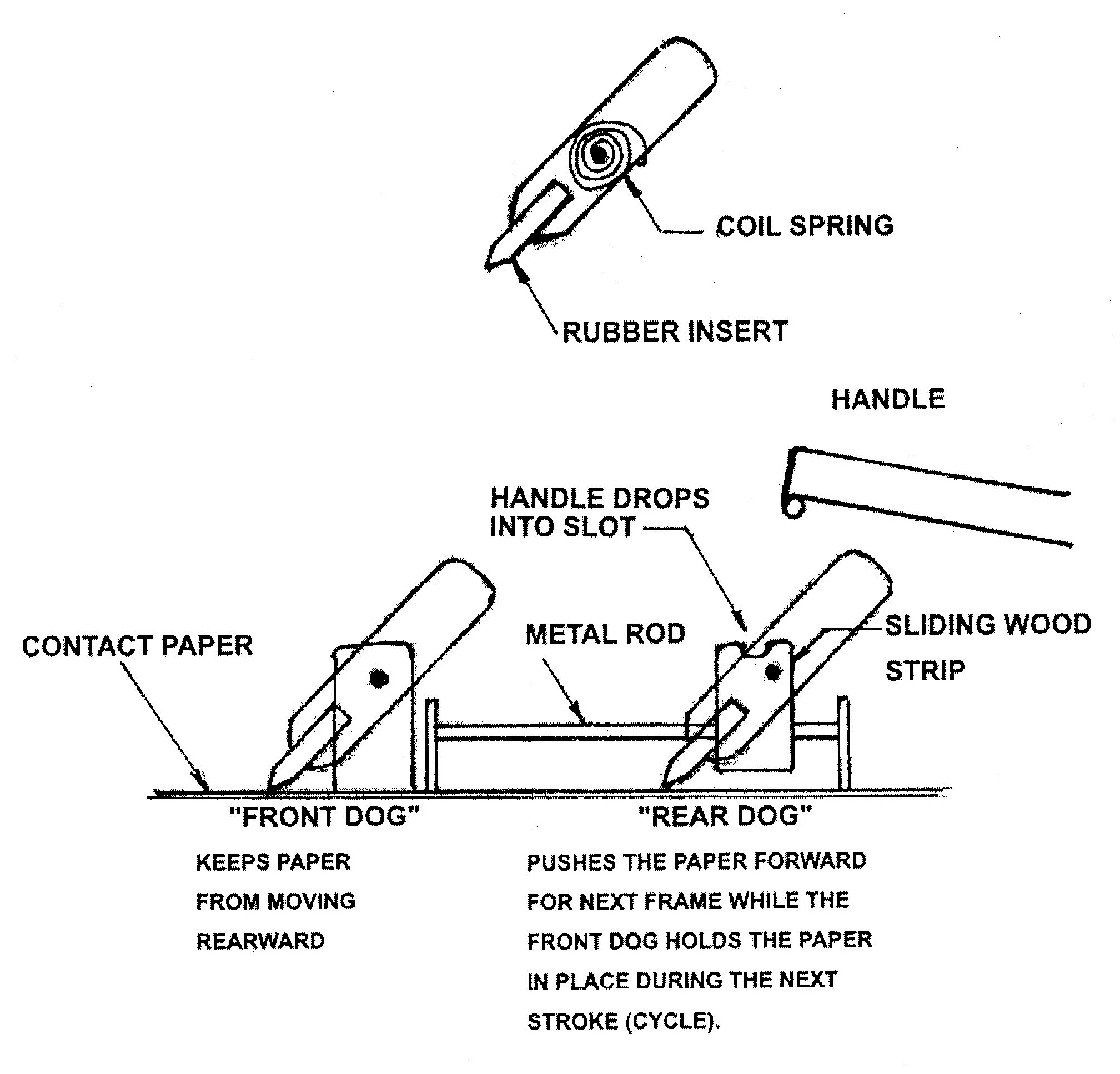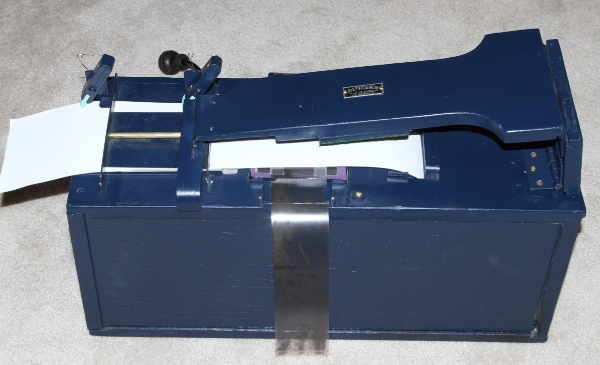The
following drawing and detailed explanation of the operation of Vincent
Dunker's contact printer were graciously provided by his grandson, Leo
Pruneau, of Woodend, Queensland, Australia. Leo Pruneau has
previously held many high-level positions in automobile manufacturing
including director of design for GM's Australian subsidiary, General
Motors-Holden's Ltd. As design director, Leo was responsible for
many of the beautifully styled Holden automobiles which are now admired
by automobile enthusiasts around the world. (see Vincent Dunker's
biography at http://dchis.com/Dunker%20Biography.htm, or click on the blue lettering below Vincent's photo on the 1950s page.




1. Sliding bar at the right (with handle in place) before
handle is moved downward 2.
Sliding bar moved left by downward motion of handle advances print paper
The apparatus described above is
the contact printer’s primary feed and control mechanism, and is
an important part in the functioning of the printer. It works in
the following manner –
From the roll, the contact printing paper is fed between the
aluminum plate and the blue metal plate, and under the front and rear
slotted components (DOGs) to the side, located on the top of the
printer box.
When the handle is operated, activating the rod-mounted wood
strip, to move it forward and backwards the DOGs work in combination
with each other. The rear DOG, attached to the wood strip, pushes
the contact paper forward, while the front DOG, mounted to the printer
box, holds the contact printer paper in place.
Depending on the direction of movement, in the forward motion,
the rear DOG's ‘rubber-tip’ wedges against and grips the
contact paper to push it forward. On its backward movement, the
rubber tip – because of the angle and the bevelled end shape
– slides over the contact paper without gripping it.
Conversely, the front DOG functions in the opposite manner.
Due to the angle of the rubber tip, and its bevelled end shape, the
contact paper slides forward without being gripped. However, it
cannot move backwards because the contact paper becomes wedged against,
and gripped by, DOG's ‘rubber tip’, and held stationary.
The printing of the negative occurs at the end of the stroke,
when the handle is in the flat position, and the two DOGs are closest
to each other. To continue after the negative has been printed,
the wood strip along with the attached DOG is moved backward by the
handle until it stops at the end of the stroke against the upturned
blue metal part. At this stage, the rear DOG, with its rubber
tip, is in position to grip and push the contact paper forward to the
next frame for the printing cycle to continue.
Due to its rapid recycling action, the printer was capable of producing
up to a dozen plus images per minute from a single negative!



